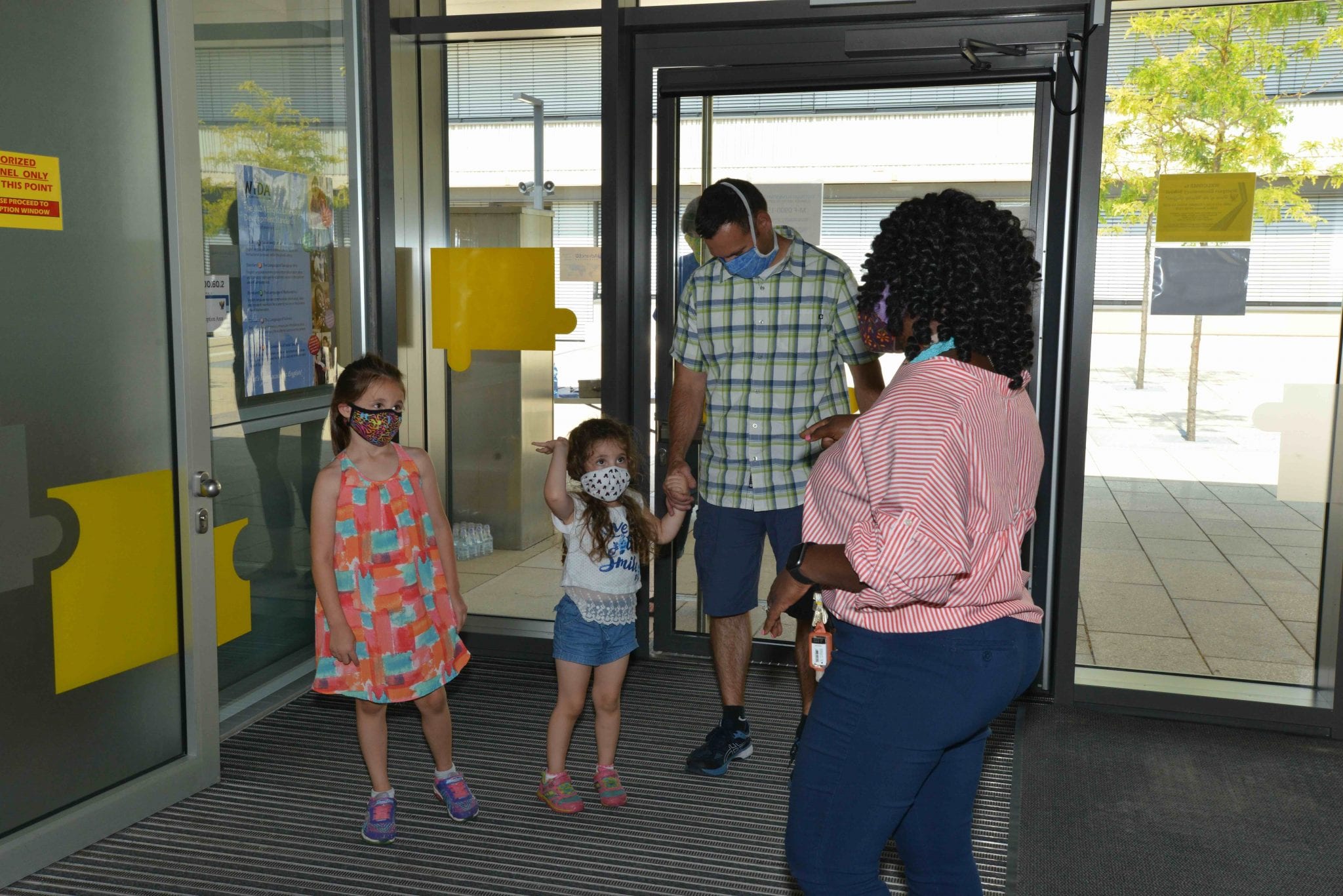by Crystal Williams, Ed.M.
Across the country, many schools are beginning a new year that will look different than previous ones. Due to COVID-19, there are new rules and expectations in place for children and adults. These changes may lead to behavioral challenges for young children in childcare, preschool, and early intervention settings. In this blog post, we will focus on potential challenges early childhood professionals and families may experience when working with young children in-person.
Please Note: The ideas recommended in this blog post have been used to support children during the pandemic across a variety of settings. Please ensure you familiarize yourself with and follow any guidelines, policies, and procedures issued by your program, state, and/or the CDC before implementing any ideas suggested here.
Social Distancing
Social distancing in classrooms is a concern for many early childhood professionals. Many wonder how to separate children, keep them from touching one another, and help them learn new rules and expectations related to distancing. To help children keep their distance from others you may want to try the ideas below.
- Place carpet squares as far apart as possible on the floor for children to sit on during group time.
- Assign student seats by using pictures of a child’s face to make it simpler to find their own space.
- Limit the number of children in centers at one time by using a sign-in system, like this, in which children can put their name or picture at the entrance of an interest center.
Service providers should also consider how they can watch the distance between individuals during early intervention visits. Providers may wish to:
- Talk with the intervention team about delivering services outside or at a park and amend the Individualized Family Services Program (IFSP), as needed.
- Talk with parents about their goals for their child during the session, make a plan for them to practice with their child, and coach and reflect with the parent from a distance.
Affection
Young children need affection from their caregivers. It is crucial that early childhood professionals consider ways to meet a young child’s need for affection during COVID-19. Below we offer several things to consider.
- Encourage new ways of greeting one another that does not involve touching—such as air fives and air hugs, waving, thumbs up, and smiling. The National Center for Pyramid Model Innovations (NCPMI) recently released a new greeting board with visual examples of greetings that are compliant with distancing.
- Spend time with each child in one-on-one time for a few minutes each day.
- Encourage children to sit next to you instead of on your lap, when possible.
In their guidance for child care providers, the CDC says, “It is important to comfort crying, sad, and/or anxious infants and toddlers, and they often need to be held. To the extent possible, when…holding very young children: Child care providers can protect themselves by wearing an over-large button-down, long-sleeved shirt…” You can view this information here.
Mask Wearing
Children over the age of two should wear a mask to the extent possible when in classroom settings or when service providers are in the home. See the Centers for Disease Control and Prevention (CDC) website for more information. Some children may struggle with mask-wearing due to age, ability, diagnosis, and/or health concerns. Adults can help children develop a tolerance for mask-wearing using the ideas below.
- Encourage families to provide masks with their child’s favorite characters and designs on them.
- Use masks in dramatic play such as putting them on a doll or stuffed animal.
- Read social stories about wearing masks, such as this one from NCPMI
- Explain the importance of masks and provide reminders.
- Consider mask breaks as directed by your program, state, and/or the CDC. The CDC provides information here.
- Ensure masks are dry and encourage families to provide more than one mask each day in case one becomes damp or dirty. Professionals may want to keep a supply of disposable child size masks in their room in case a child needs one.
- Brainstorm strategies to help children improve their ability to wear a mask with caregivers.
- Share tips such as ear savers, mask spacers, or different styles of masks that may be more comfortable.
It may also be necessary to remind families of the importance of wearing masks during therapy sessions and during drop off/pick up at school. Communicate the expectations for mask-wearing in several modes such as written, oral, and visual, by using videos, infographics, or tip sheets. The NCPMI provides several graphics, tip sheets, and videos that may be helpful. The Illinois Early Intervention Clearinghouse has developed wonderful resources for providers and families navigating the unique challenges resulting from the COVID-19 pandemic. Resources are available in English and Spanish that can be downloaded and printed or sent electronically.
Photo by Geoffrey Morris, USAG Stuttgart















